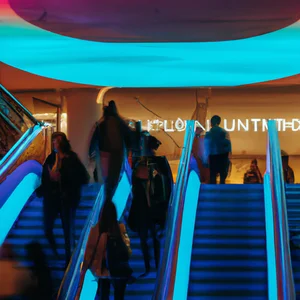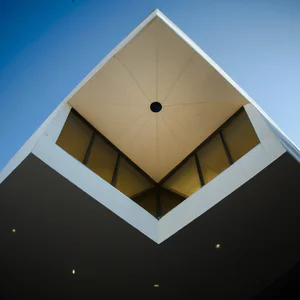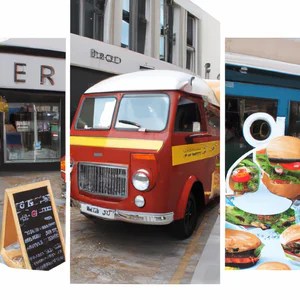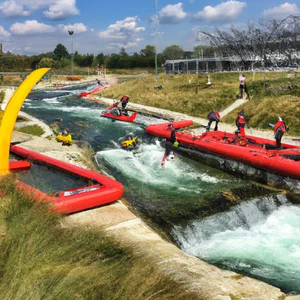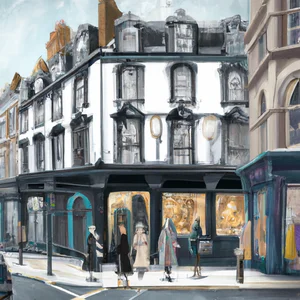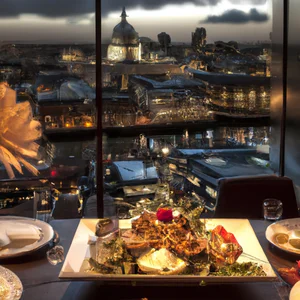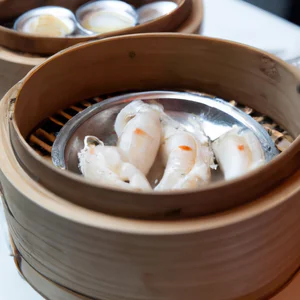Book your experience
Tate Modern: contemporary art in the iconic former power station
The Tate Modern, guys, is really a place worth visiting, especially if you are passionate about contemporary art. Imagine entering what used to be a power plant, a place that, on its own, already has a crazy charm. It’s as if every corner tells a story, and I think that’s exactly the beauty of it.
When I went there for the first time, I remember feeling a bit like a fish out of water, but in a good way, eh! It’s a mix of foreign and local works that will leave you speechless. And then, oh, those installations! Some seem almost crazy, but, you know, I really like these things that make you think… or that leave you perplexed. Like, there was a work that seemed like a pile of rubbish, and yet, somehow, it managed to convey a profound sense of social criticism. I don’t know, it’s a bit as if the artist wanted to tell you: “Look how we treat our world”.
And yes, there are also works by famous artists, of course, but sometimes it is in the lesser-known works that the real magic is found. As I walked around, I noticed a couple of pieces that seemed simple, but hit you right in the heart. There was a completely white canvas with just a small black dot in one corner… some sort of metaphor for life, perhaps? Who knows!
In short, if you happen to find yourself in London, drop by. I don’t promise you that you will understand everything, but I think you will take home a lot of emotions and some food for thought, because, in the end, art is also this, right? A journey that makes you feel alive, even if you don’t always understand where you are going.
Fascinating history of the Tate Modern
When I walked through the doors of the Tate Modern for the first time, I was immediately struck by the magnificence of the former power station, with its red brick walls and enormous windows overlooking the Thames. At that moment, I wasn’t just walking into a museum; I was crossing a bridge between past and future, between the industrial age and contemporary art. The vibrant atmosphere was palpable: you could feel the pulse of an evolving London, reflected in the works on display.
A journey through time
Tate Modern is not just a gallery; it is a symbol of urban transformation. Opened in 2000, this monumental structure came to life in a former power plant, the Bankside Power Station. Designed by the Swiss architect Herzog & de Meuron, the Tate was able to preserve the industrial character of the place, making the past an integral part of the artistic experience. According to the Tate’s official website, the building was conceived to house some of the most important works of art of the 20th and 21st centuries, establishing an ongoing dialogue between different forms of artistic expression.
An insider tip
When you visit Tate Modern, don’t limit yourself to just exploring the exhibition rooms. Take a step up to Level 10, where you’ll find breathtaking views of the London skyline. It’s a perfect place to take a break and reflect on the works you’ve just seen. A little-known secret is that intimate events, such as poetry readings and contemporary music concerts, often take place here, which are not widely advertised. An excellent opportunity to fully immerse yourself in the local culture!
The cultural legacy of the Tate
Tate Modern has had a profound impact on the cultural scene in London and beyond. It has democratized access to contemporary art, attracting visitors from all over the world and becoming a point of reference for global artistic debate. Its mission is to make art accessible and to stimulate reflection on contemporary social and political issues. The Tate has also embraced sustainable tourism, promoting initiatives to reduce the environmental impact of its activities, such as the use of recyclable materials in its exhibitions.
An experience not to be missed
If you have time, take part in one of the creative workshops that the Tate offers regularly. These interactive experiences will allow you to explore the artistic techniques used by contemporary masters and express your creativity in a stimulating environment. It will be a unique way to connect with art, not only as a viewer, but as a creator.
Final reflection
One of the most common misconceptions about the Tate Modern is that it is only accessible to those with an in-depth knowledge of art. In fact, the Tate welcomes everyone, from newbies to experts, and offers experiences that speak to all levels of understanding. I invite you to consider: What work of art might inspire you to look at the world from a new perspective? Tate Modern is not just a museum; it is an invitation to explore and reflect on our contemporary reality.
Explore iconic works by contemporary artists
An experience that touches the heart
The first time I crossed the threshold of the Tate Modern, my heart raced to the pulsating rhythm of the works of art that occupy the spaces of this former electrical works. As I strolled among the towering installations and vibrant canvases, I came across Olafur Eliasson’s “The Weather Project,” a surreal depiction of an artificial sun that fills the Turbine Hall with warm, enveloping light. In that moment, I understood that contemporary art is not just to be observed, but to be experienced, to be felt.
Works not to be missed
The Tate Modern houses some of the most iconic works of the contemporary art scene. Among these:
- “The Kiss” by Gustav Klimt - While not a contemporary work in the strict sense, its presence here speaks to the influence that artists of the past continue to have on modern artists.
- “Fountain” by Marcel Duchamp - A masterpiece of the ready-made concept that challenged artistic conventions.
- “Shibboleth” by Doris Salcedo - A work that addresses the theme of identity and separation, creating a crack in the floor of the Tate, a symbol of division.
An insider tip
If you want a different perspective, I recommend visiting the permanent collection during less crowded hours, generally weekday mornings. Also, don’t forget to explore the galleries upstairs, where you’ll find lesser-known but equally fascinating works by emerging artists. Here, the intimate atmosphere will allow you to immerse yourself in the details of each work, away from the buzz of the crowd.
The cultural impact of Tate Modern
Tate Modern is not just a museum; it has become a symbol of innovation and cultural dialogue. His commitment to presenting works by artists who address social and political issues has had a significant impact on the perception of contemporary art, transforming it into a vehicle for change and reflection.
Sustainable tourism practices
Tate Modern promotes responsible tourism practices, encouraging the use of public transport and recycling within the museum. Additionally, temporary exhibitions often include works by artists who use recycled materials, raising visitors’ awareness of the importance of sustainability.
A visual and sensorial journey
Every corner of Tate Modern tells a story. The walls seem vibrant with energy and the air is full of emotion. We invite you to take the time to sit in one of the common spaces and observe how people react to what they see. This interaction can prove to be just as engaging as the works themselves.
An activity worth trying
For a unique experience, take part in one of the art workshops offered by the Tate for adults and children. These hands-on sessions will allow you to explore your creativity, inspired by the works you’ve just seen.
Myths to dispel
A common misconception is that contemporary art is incomprehensible or elitist. In fact, many works are designed to be accessible and stimulate dialogue. Don’t be afraid to express your opinions, even if you’re not an expert: art is made to be discussed and shared.
A final reflection
Tate Modern is much more than just a museum; it is a journey through the soul of humanity. What emotions will the works you encounter arouse in you? Let this experience lead you to new perspectives and a deeper understanding of contemporary art.
The best events and exhibitions not to be missed
A life changing experience
I still remember the moment I crossed the threshold of the Tate Modern for the first time, attracted not only by its iconic architecture, but also by the promises of unique artistic experiences. As I walked through the corridors, I felt a palpable energy: the frenzy of a Banksy exhibition attracting crowds of admirers and tourists, all united by curiosity and passion for contemporary art. That day marked the beginning of a long love story with this museum, which has been able to present events and exhibitions of extraordinary importance.
Unmissable events and exhibitions
The Tate Modern is not just a sanctuary for art; it is a stage for events that challenge conventions and raise questions about our society. Each year, the museum hosts temporary exhibitions ranging from emerging artists to established names. For 2023, for example, a retrospective of Yayoi Kusama, the queen of immersive installations, is planned, which promises to enchant visitors of all ages with its worlds of dots and vibrant colors.
To stay updated on current events, it is advisable to visit the official Tate Modern website or sign up to their newsletter. Here you will find detailed information on timetables, tickets and special programs.
An insider tip
If you want to have an unforgettable experience, try taking part in one of the art talks organized by the museum. These meetings offer the opportunity to interact directly with curators and artists, delving into the themes of the current exhibitions. Often, these sessions are free and only require advance registration. An authentic way to get to the heart of contemporary culture!
The cultural impact
The Tate Modern is not just an exhibition venue, but a cultural reference point that reflects the evolution of modern and contemporary art. With its commitment to promoting artists of different nationalities and backgrounds, the museum actively contributes to creating a global dialogue through art. The exhibitions not only entertain, but also stimulate critical reflection on social and political issues, making each visit an educational and stimulating experience.
Sustainable tourism practices
In an age where sustainability is more crucial than ever, Tate Modern has taken steps to reduce its environmental impact. By participating in events and exhibitions, visitors can contribute to responsible tourism, supporting an institution that promotes ecological awareness through art. Using public transport to reach the museum is a great way to reduce your ecological footprint.
Immerse yourself in the atmosphere
Imagine walking beneath the imposing vaults of a former power plant, surrounded by works of art that defy perception. The silence is interrupted only by the whispers of other visitors who move respectfully between the installations. Every corner of the Tate Modern is an invitation to explore, discover and interact with works that speak to universal themes, from what it means to be human to how we can live in an ever-changing world.
An experience worth trying
Don’t miss the opportunity to participate in a contemporary art workshop, where you can get your hands dirty and create your own work inspired by the artists on display. These hands-on experiences not only enrich your visit, but also allow you to take a piece of your artistic adventure home.
Myths and misconceptions
It is common to think that the Tate Modern is only accessible to art experts or those with specific training. In reality, the museum is open to all, and its exhibits are designed to be enjoyed by a wide audience. Don’t be afraid to explore and ask questions; art is for everyone and every interpretation is valid.
A personal reflection
After each visit to Tate Modern, I find myself reflecting on how art can reflect and influence our society. What message will you take home after attending one of the exhibitions? Art has the power to transform our perceptions and open new perspectives. If you had the chance to participate in a unique event, what artist or theme would you like to explore?
A sensorial journey: immersive installations at Tate Modern
When I walked through the doors of the Tate Modern for the first time, I was unprepared for the transformative experience that awaited me. Light filtered through the museum’s huge windows, creating an almost magical atmosphere. As I approached an immersive installation, I found myself surrounded by sounds and colors dancing around me, as if the art itself had come to life. This is the power of immersive installations, a journey that engages the senses in ways that go beyond simple observation.
A multisensory experience
Immersive installations at Tate Modern offer a unique opportunity to interact with contemporary art. Artists like Olafur Eliasson and Yayoi Kusama have created works that challenge traditional boundaries, inviting visitors to enter spaces that stimulate sight, sound, and even touch. An emblematic example is Kusama’s famous “Infinity Mirror Rooms”, where mirrors create an illusory effect that seems to extend into infinity. According to the Tate’s official website, these installations not only attract tourists, but also have the power to transform the perception of art itself.
An insider tip
If you want a more intimate experience with these installations, I recommend visiting during less crowded hours, such as Tuesday mornings. Additionally, many artists offer “behind the scenes” sessions or guided tours that can reveal fascinating details about the creation of the works. It is a rare and precious opportunity to understand the creative process and message behind these installations.
Cultural and historical impact
Immersive installations at Tate Modern are not just a way to attract visitors; they also represent a significant change in the contemporary artistic landscape. These works invite deep reflections on issues such as identity, perception and social interaction, making the museum a center of cultural debate. The Tate Modern, once a powerhouse, has reinvented itself as a space for artistic expression, perfectly in tune with the needs of the modern world.
Sustainable tourism practices
It is important to remember that Tate Modern is also committed to environmental sustainability. The installations are often made with recycled materials and promote messages of ecological awareness. Choosing to visit the museum using public transport or attending organized events can help reduce the environmental impact of your trip.
Soak up the atmosphere
Imagine walking in an environment where each step brings you closer to a unique sensory experience. Lights and sounds intertwine as you move through spaces that challenge your perception of reality. This is what the immersive installations at Tate Modern can offer you: an opportunity to be an integral part of the art, rather than just a spectator.
A common myth
Many think that the installations are designed exclusively for young people or tourists. In reality, immersive art has the power to touch hearts and minds of all ages, making it accessible and meaningful to every visitor.
A final reflection
I invite you to consider: how can immersive art change the way you see the world? Tate Modern is not just a museum, but a journey through emotions and reflections that can enrich your life in unexpected ways. Don’t miss the opportunity to live these unique experiences; it could be the catalyst for a new perspective.
Tips for visiting the Tate Modern without the crowds
A personal experience
When I visited the Tate Modern on an October morning, the sun filtered through the huge windows of the former power station, creating an almost magical atmosphere. I remember entering the museum with the intention of admiring the works of contemporary artists, but I was enchanted by the tranquility that reigned in those hours. While most tourists crowded in the afternoons, I was able to explore the installations without haste, getting lost among the works of Warhol and Hirst. That silence, interrupted only by the whisper of my shoes on the concrete floor, transformed my visit into an almost intimate experience.
Practical information
To avoid the crowds at Tate Modern, I highly recommend planning your visit on a weekday, preferably early in the morning. According to the Tate’s official website, opening hours are 10am to 6pm, with Thursdays and Fridays extending until 10pm. These late evenings are a great way to enjoy art in a more relaxed atmosphere. Also, check the calendar of events and exhibitions on the official website, as there are often special openings that attract fewer visitors.
An insider tip
A little-known trick to enjoy a more peaceful visit is to follow guided tours. These small groups will allow you to explore the museum with an expert guide who not only shares interesting anecdotes, but also leads you to lesser-known works, away from the crowds. It’s a way to discover hidden corners of the Tate Modern that many overlook.
Cultural and historical impact
Tate Modern is not just a museum; it is a symbol of London’s cultural transformation. Housed in an iconic industrial structure, it represents the fusion of contemporary art and industrial history. Its inauguration in 2000 marked a paradigm shift in the way modern art is perceived and appreciated, breaking barriers between art and the public. This impact is also visible in the variety of visitors it attracts, from students to families, all united by curiosity.
Sustainable practices
Tate Modern is committed to sustainable tourism practices, encouraging visitors to use public transport to reach the museum. Southwark tube station is a short walk away, making access easy. Additionally, the museum has implemented initiatives to reduce its environmental impact, such as the use of renewable energy to power its facilities.
An immersive atmosphere
Imagine walking through the galleries, with the walls telling stories of innovation and artistic provocation. Huge installations by contemporary artists envelop you, creating a sensory experience that goes beyond simple observation. The air is full of creativity and the echoes of other visitors’ thoughts invite you to reflect on what is in front of you.
An unmissable activity
During your visit, don’t miss the opportunity to participate in an art workshop held in the museum. These events, often led by local artists, offer a rare opportunity to learn and experience art firsthand, far from the frenzy of galleries.
Addressing the myths
A common misconception is that Tate Modern is only for art enthusiasts. In reality, his exhibitions are accessible and engaging for everyone. It is not necessary to be an expert to appreciate the value of the works on display; every visitor can find a personal connection with the art.
A final reflection
Next time you plan a visit, ask yourself: How can I experience art in a more personal and authentic way? Tate Modern, with its endless stories and angles, is the perfect place to explore this question. Immerse yourself in this world of creativity and let it surprise you.
The Tate Modern and sustainable tourism
A personal experience in the heart of London
When I walked through the doors of the Tate Modern for the first time, the air was buzzing with creativity and innovation. I remember taking part in a guided tour dedicated to the museum’s sustainable architecture, an aspect that often goes unnoticed. I found myself contemplating how a former power plant, with its imposing brick structure, had been transformed into a symbol of contemporary art and sustainability. Every corner of the museum told a story of reuse and respect for the environment, making me feel part of a larger movement.
Practical and up-to-date information
Tate Modern is not only a landmark for art lovers, but also an example of how cultural institutions can embrace sustainable tourism. The museum has implemented several green practices, such as using renewable energy for 100% of its operations. For those visiting London, it is advisable to use public transport: the Tate is easily reachable by tube (Southwark station) or by bus, which reduces the environmental impact compared to the use of private vehicles.
An insider tip
A little-known tip is to visit the Tate Modern during the week, especially on weekdays. Not only will you find fewer crowds, but you will also be able to participate in special events and workshops dedicated to sustainability, which are often not advertised. These events offer a unique opportunity to interact with artists and curators who share your passion for art and the environment.
Cultural and historical impact
Tate Modern is more than just a museum; it is an example of how art and culture can contribute to a more sustainable society. Its transformation from power plant to art center has inspired other institutions around the world to rethink their environmental impact. This approach has made the Tate a leader in the cultural sector, demonstrating that it is possible to combine beauty and responsibility.
Sustainable tourism practices
When visiting Tate Modern, don’t forget to take advantage of its responsible tourism initiatives. The museum offers guided walking and cycling tours, encouraging visitors to explore their surroundings in an eco-friendly way. Furthermore, the Tate has launched a carbon offsetting programme, allowing visitors to actively contribute to protecting the environment.
A vibrant atmosphere
Walking through the galleries, you can sense a palpable energy, almost as if the works themselves were breathing. Immersive installations envelop you in a world of color and sound, while the museum’s large open spaces offer a fascinating contrast to contemporary works. Each visit thus becomes a sensorial experience that stimulates the mind and heart.
Activities to try
I recommend you take part in one of the sustainable art workshops held regularly at the Tate Modern. These workshops offer the opportunity to learn artistic techniques using recycled materials, allowing you to express your creativity while practicing sustainability.
Myths and misconceptions
A common myth is that sustainable tourism is expensive and difficult to implement. In In reality, Tate Modern demonstrates that it is possible to enjoy an enriching artistic experience without compromising our planet. The free visits to the permanent galleries are clear proof of this commitment.
Final reflection
In light of all this, I ask myself: how can we all contribute to more sustainable tourism in our visits to museums and cultural centers? Every small gesture counts, and Tate Modern offers us a model to follow. The next time you visit a museum, we invite you to reflect on how your choices can influence the future of art and the environment.
Historical curiosities: from electricity to art
When I walked through the doors of Tate Modern for the first time, I couldn’t imagine finding myself inside a former electrical works. The imposing architecture, with its chimneys soaring into the London sky, tells a fascinating story that goes far beyond contemporary art. It was 2000 when this building, originally built in 1947 to generate energy for the city’s electrical grid, reopened as a museum, transforming an industrial symbol into a beacon of creativity.
From energy production to contemporary art
Tate Modern is not just a museum; it is a stage where art dialogues with history. Originally, the site was home to the Bankside Power Station, designed by architect Sir Giles Gilbert Scott. Its conversion represented a unique opportunity to preserve a piece of industrial history, demonstrating how art can also arise from the intelligent reuse of spaces. Today, the spaces once dedicated to turbines and generators host works by iconic artists such as Picasso, Warhol and Hockney.
An insider tip
A little-known fact is that Tate Modern offers a free audio tour, accessible via the museum app. This not only enriches your visit with historical and artistic insights, but also allows you to explore lesser-known corners of the gallery. A true treasure for those who want to discover the story behind each work.
Cultural impact of Tate Modern
The Tate Modern has radically changed the cultural landscape of London. It has opened the doors to contemporary art for a wider audience, breaking down barriers to entry and promoting an active dialogue between artists and visitors. This inclusive approach has made the museum a symbol of innovation and accessibility, helping to position London as one of the world’s art capitals.
Commitment to sustainability
In an age where sustainability is key, Tate Modern is committed to reducing its environmental impact. Responsible tourism practices are encouraged, with initiatives such as recycling materials and using renewable energy to power its operations. This not only protects the environment, but also offers an example for other cultural institutions to follow.
An experience not to be missed
I recommend you take part in a contemporary art workshop, where you can test your creativity by drawing inspiration from the installations on display. It is an opportunity to completely immerse yourself in the artistic atmosphere of the museum and, who knows, discover a hidden talent.
Myths to dispel
A common misconception is that Tate Modern is “only” for art experts. In reality, the museum is designed for everyone, from beginners to enthusiasts. The works are presented in such a way as to stimulate curiosity and interest, regardless of cultural background.
Final reflection
The Tate Modern is not just a museum, but a journey through time and space, which invites us to reflect on the continuous transformation of society through art. When you think of the Tate, what is the first image that comes to mind? The story of a former electrical plant that evolved into a center of artistic innovation can give you a new perspective on how art can change the way we see the world.
Cafés and restaurants: local flavors to discover
When you cross the threshold of the Tate Modern, the visual impact of the works of art is undoubtedly overwhelming, but don’t miss the opportunity to delight your palate too. During my latest visit, I discovered a hidden corner that transformed my experience: Café 2, located on the second floor. Immersed in an informal and bright atmosphere, this café is not just a place to refresh, but a meeting point for artists, tourists and locals, all united by a passion for art and good food.
A taste of London
Café 2’s menu is a true homage to local flavours, with dishes prepared with fresh, seasonal ingredients. From vegetable quiche to carrot cake, every bite tells a story of authenticity and creativity. But it’s not just the food that makes this experience unique; it is the attention to sustainability that is striking. The cafe collaborates with local producers and uses biodegradable materials, aligning perfectly with responsible tourism practices that are gaining more and more attention.
An insider tip
If you are a tea lover, don’t miss their afternoon tea, a British tradition reinterpreted with a modern twist. Also, ask the staff to recommend the “dish of the day”: these are often special creations that you won’t find on the standard menu. This little secret will take you on a culinary journey that reflects the dynamism of London’s food scene.
The cultural impact
The link between art and gastronomy in the Tate Modern is not accidental. This fusion of experiences stimulates conversations and connections, making art more accessible and engaging. It is a place where food becomes an extension of art, creating an environment where visitors of all ages can explore and share their impressions.
Soak up the atmosphere
Imagine sipping a cappuccino while observing the play of light filtering through the huge windows of the café, while the buzz of conversations envelops you in a warm and welcoming embrace. It’s a moment of pause that allows you to reflect on what you’ve just seen, a way to recharge your batteries before continuing your artistic exploration.
An activity worth trying
After enjoying a good coffee, why not take part in one of the culinary experiences offered by the museum? Tate Modern regularly runs culinary workshops combining art and cooking, where you can learn to create dishes inspired by the works on display. A fantastic way to get your hands dirty and take a piece of the Tate home!
Myths to dispel
A common misconception is that restaurants inside museums are expensive and low quality. On the contrary, Tate Modern proves that it is possible to find great food at reasonable prices, without compromising on quality. This is one of the reasons why coffee is so popular among locals.
Final reflection
At the end of your visit, as you walk away from the Tate Modern, ask yourself: how has art influenced my dining choices and vice versa? This question can open the door to new discoveries and connections, demonstrating that art and food, although seemingly distinct, can converge to enrich our daily experiences.
Art up close: workshops and interactive experiences
When I walked through the doors of the Tate Modern, I didn’t yet know that I would have the opportunity to get my hands dirty, literally. As I wandered among the impressive installations and bright colors of contemporary works, I discovered that the museum also offers workshops and hands-on activities for visitors. Imagine my surprise when I found a workshop dedicated to creating works of art inspired by the installations featured!
An experience unique
Taking part in a workshop at Tate Modern is a great way to immerse yourself in contemporary art in a hands-on way. Not only can you explore the iconic works on display, but you also have the chance to express your creativity alongside expert artists and facilitators. During the workshop I attended, I discovered that there are sessions dedicated to different artistic techniques, from painting to sculpture, and each time the theme changes, keeping the experience fresh and stimulating.
Practical information
To stay updated on the activities offered, it is advisable to visit the official Tate Modern website; they often publish details about workshops and temporary exhibitions. Reservations are generally recommended, as places can sell out, especially on weekends.
An insider tip
Here’s a trick: Many workshops offer discounts for groups or during less crowded hours. If you’re an art lover but also a little shy, consider attending a workshop during the week. Your experience will be more intimate and you will be able to interact more with the teachers and other participants.
The cultural impact
The Tate Modern is not just a place of exhibition, but a true center of cultural innovation. The workshops not only promote creativity, but also encourage dialogue between different communities. This exchange of ideas helps create an atmosphere of inclusion and openness, essential for the cultural growth of contemporary society.
Sustainability and responsibility
An often overlooked aspect is Tate Modern’s commitment to sustainable practices. Many workshops use recycled or low environmental impact materials, encouraging participants to reflect on the importance of sustainability in art. So as you create, you can also contribute to a bigger message.
Soak up the atmosphere
Imagine being surrounded by bright colors and bold shapes, while the sounds of creativity envelop you. The workshops at Tate Modern are not just an opportunity to create, but also a way to connect with art in a way that goes beyond simple observation.
Final reflections
If you’ve ever thought about getting into art but felt intimidated, the workshops at Tate Modern could be your gateway. I invite you to ask yourself: what might it mean to you to bring a work of art to life? You might discover a part of yourself you didn’t know, or simply enjoy the experience of creating in a stimulating environment. The true beauty of art is that it is for everyone, and Tate Modern is the place to start your journey.
Alternative itinerary for modern art lovers
A personal experience
I remember with particular affection the day when, visiting the Tate Modern for the first time, I found myself getting lost among the rooms of that monumental former power station. While I was looking at a work by Olafur Eliasson, a group of kids began to have a lively discussion about how contemporary art could reflect the social challenges of our time. It was in that moment that I understood how the Tate is not just a museum, but a real meeting point for ideas and emotions.
Practical information
For lovers of modern art, Tate Modern offers an alternative itinerary that challenges convention. Starting on level 0, where the Turbine Hall is located, you can immerse yourself in temporary installations that transform the space into a multi-sensory experience. Don’t forget to check the Tate Modern official website for exhibition times and any special events; Often, weekends are crowded, so it’s best to visit on weekdays to enjoy a more intimate experience.
An insider tip
A little-known trick is to take one of the guided tours offered by the Tate. These tours will not only take you to discover the most iconic works, but will also provide you with a unique perspective thanks to the stories and curiosities shared by the expert guides. Book your tour in advance on the Tate website to guarantee a place and have access to information you wouldn’t find in traditional audio guides.
Cultural and historical impact
The Tate Modern is not just a museum, but a symbol of London’s cultural renewal. Inaugurated in 2000, it took the place of a decommissioned power plant, transforming a place of energy production into a beacon of creativity and innovation. This change has had a significant impact on the surrounding community, attracting visitors from around the world and helping to redevelop the Bankside neighbourhood.
Sustainable tourism
In an age where responsible tourism is more important than ever, Tate Modern is committed to reducing its environmental impact. The facility promotes sustainable practices, such as using recycled materials for installations and supporting artists working with ecological themes. Choosing to visit the Tate is not only a cultural gesture, but also a step towards more conscious tourism.
Immersive atmosphere
As you stroll through the works, let your gaze get lost in the details of the installations, which tell stories of challenges and hopes. The natural lighting that filters through the gallery’s large windows creates an almost magical atmosphere, and the sound of visitors’ conversations and laughter adds another layer of life to the experience.
Activities to try
Don’t just observe; take part in one of the creative workshops offered by the Tate. Here, you can experiment with contemporary artistic techniques and work closely with local artists. These hands-on experiences will not only enrich your visit, but will allow you to take a piece of your artistic adventure home.
Myths to dispel
A common misconception is that modern art is incomprehensible or elitist. In contrast, Tate Modern is designed to be accessible to all. The works are designed to stimulate reflection and dialogue, and every visitor, regardless of cultural background, can find personal meaning in them.
Personal reflection
Be inspired by the Tate Modern and ask yourself: how can contemporary art influence your view of the world? Each work is an invitation to look beyond, to explore the complexities of modern society and discover new perspectives. The Tate is not just a place to visit, but an internal journey to undertake.

 Architecture and Design
Architecture and Design Cities and Regions
Cities and Regions Culture and History
Culture and History Events and Festivals
Events and Festivals Fashion and Shopping
Fashion and Shopping Food and Wine
Food and Wine Nature and Adventure
Nature and Adventure Unique Experiences
Unique Experiences


















